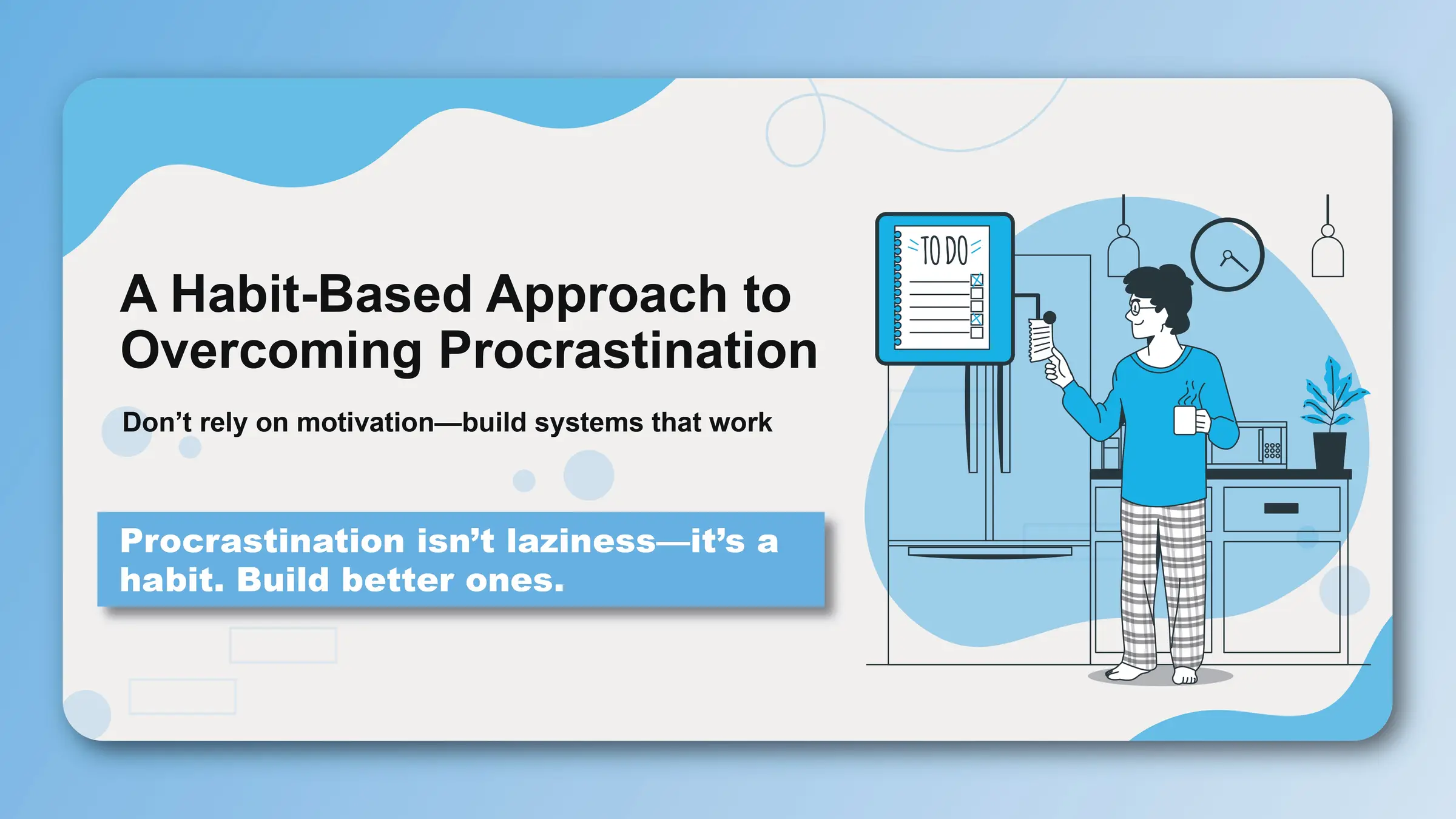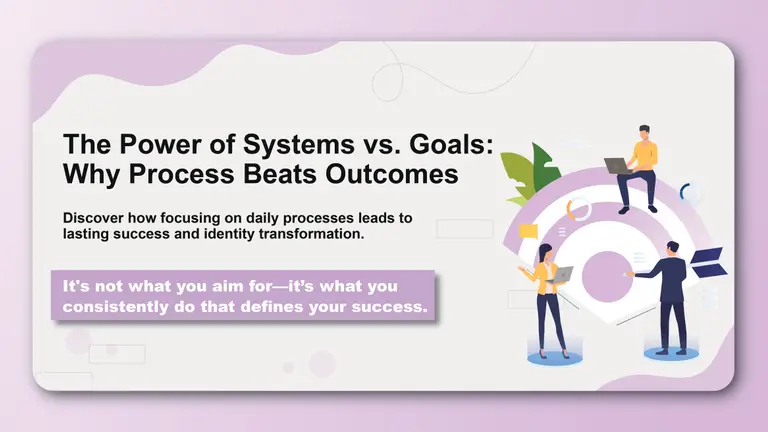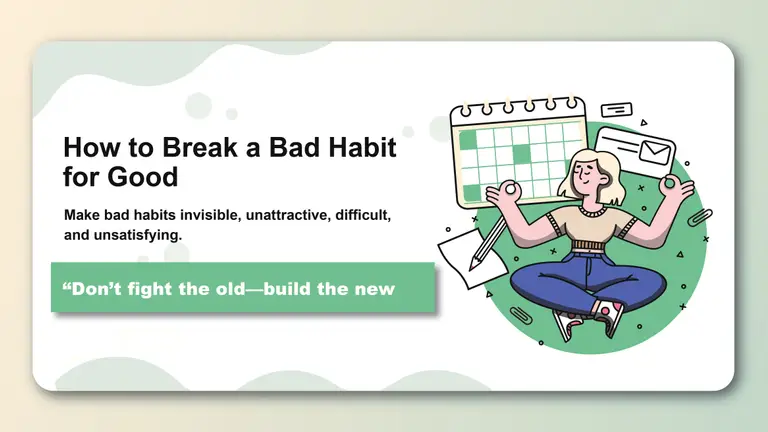Procrastination is often seen as a sign of laziness or poor time management, but it's more accurately described as a habit. We delay tasks for various reasons, often falling into a cycle of avoidance that's hard to break. The key to overcoming procrastination isn't about forcing yourself to "just do it," but about building a system of habits that encourages action and reduces the friction of starting.
Understanding the "Why" Behind Procrastination
Before we can build better habits, it's helpful to understand why we procrastinate. Procrastination is often an emotional regulation problem, not a time management one. We avoid tasks that make us feel bad. Common triggers include:
- Fear of failure or judgment: We worry we won't do a good job.
- Perfectionism: We set the bar so high that starting feels impossible.
- Task ambiguity: We're not sure where to start or what to do next.
- Low energy or motivation: The task feels overwhelming or unrewarding.
By recognizing procrastination as a response to these feelings, we can build habits that address the root cause.
Start Small with the Two-Minute Rule
The hardest part of any task is often just getting started. The "Two-Minute Rule," popularized by David Allen, is a simple but powerful habit to combat this inertia.
The rule is simple: If a task takes less than two minutes to do, do it now.
For larger tasks, the rule becomes: When you start a new habit, it should take less than two minutes to do.
- "Read a book" becomes "Read one page."
- "Do 30 minutes of yoga" becomes "Take out my yoga mat."
- "Write a report" becomes "Open the document and write one sentence."
The goal is to make it so easy to start that you can't say no. This builds the habit of showing up.
Use Habit Stacking to Build Momentum
Habit stacking, a concept from James Clear's "Atomic Habits," involves pairing a new habit you want to start with an existing one you already do. This links the new, desired behavior to an established routine.
The formula is: After CURRENT HABIT, I will NEW HABIT.
- After I pour my morning coffee, I will meditate for one minute.
- After I take off my work shoes, I will immediately change into my workout clothes.
- After I finish dinner, I will immediately open my textbook and review my notes for five minutes.
By connecting your new anti-procrastination habits to something you already do automatically, you increase the chances that you'll follow through.
Create a System, Not Just a Goal
Relying on motivation is a recipe for procrastination. Motivation is fleeting. Instead, build a reliable system of habits.
- Time Blocking: Instead of a to-do list, schedule your tasks directly into your calendar. This gives them a specific time and place to live, creating a firm intention to act.
- Environment Design: As we've discussed in other posts, design your environment to make procrastination harder. If you get distracted by your phone, put it in another room while you work.
- Focus on Process, Not Outcome: Concentrate on the process of doing the work, not the final result. Instead of "write a perfect essay," focus on "work on the essay for 25 minutes." This lowers the stakes and reduces the fear of not meeting a perfect standard.
Conclusion: Build Habits, Beat Procrastination
Overcoming procrastination is a journey of building better habits, not a one-time fix. By understanding your triggers, starting small, and building a supportive system, you can break the cycle of avoidance. Start with one small change, like the Two-Minute Rule, and build from there. Consistent action, no matter how small, is the most powerful antidote to procrastination.



